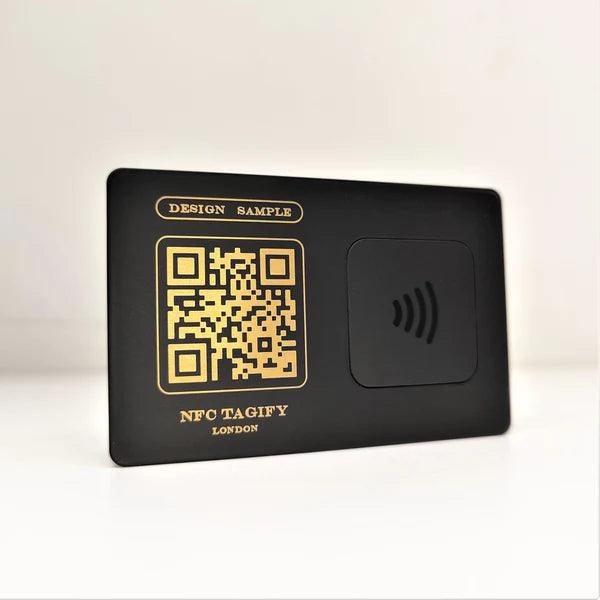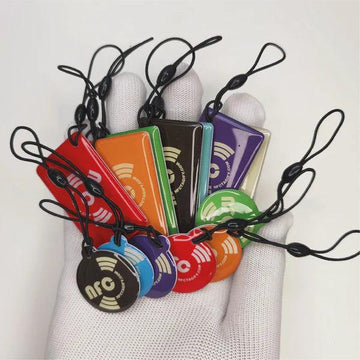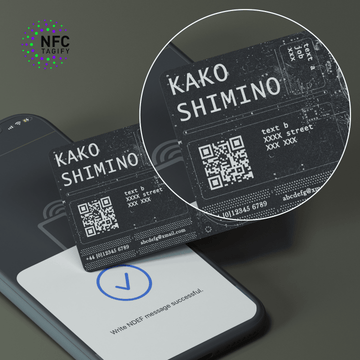NFC Tags Vs QR Codes

Contents
In the era of digital evolution and contactless transactions, individuals and businesses are primarily introduced to two pivotal technologies: Near Field Communication (NFC) and Quick Response (QR) technology. While NFC tags offer a customizable experience at an affordable cost, QR codes provide immediate utility to anyone with a smartphone. Understanding the core differences and applications of these technologies is crucial to making an informed decision on which suits your needs best.

The Core Differences: NFC and QR codes on digital business cards serve the purpose of facilitating access to specific websites or storing essential information. However, the primary divergence lies in their operational nature. QR codes function as two-dimensional barcodes, while NFC employs radio-frequency technology to transmit data between an NFC tag and an NFC-enabled device. Although both technologies accomplish similar tasks, NFC tags, with their embedded chips, can store more information than QR codes. Typically, QR codes find their use in advertising campaigns and automotive part tracking, whereas NFC tags are pivotal for payment processing and social media promotions.
Cost Analysis: Creating QR codes is nearly cost-free and can be done through various QR code generation sites or even by right-clicking on a webpage. This affordability makes QR codes a go-to choice for small businesses advertising their websites or social media pages. On the flip side, NFC tags, due to their encoding requirement and embedded microchips, are costlier, especially when deployed on a large scale, such as integrating them into payment systems or loyalty card functions.

Production Aspect: Producing QR codes is a straightforward task requiring only a printer and bond paper. However, NFC tags, with their microchips, demand a higher production cost. Yet, the flexibility of NFC tags allows individuals to customize them for personal use, balancing the cost based on the scale of usage.
User Interaction: QR codes necessitate a camera to capture the code, requiring proper lighting and alignment, while NFC tags offer a hassle-free experience where a simple tap with an NFC-enabled device suffices.
Utility: QR codes cater to a broader audience since a camera-equipped device is all that’s needed. NFC, however, requires an NFC-supported device, making it more suited for businesses aiming to secure their facilities or individuals keen on customizing their cards.
Customization: The realm of customization is where NFC technology outshines. Unlike the simplistic nature of QR codes, NFC tags, especially custom printed NFC cards, provide a platform for individuals to program and tailor the tags to their preferences.
Conclusion: The choice between QR codes and NFC tags boils down to the specific needs and scale of usage. While QR codes offer a quick and affordable solution for information sharing, NFC tags present a more versatile and user-friendly alternative for those looking to explore varied functionalities. Discover more about the potential of NFC tags with NFC Tagify and delve into our blog on the Top 11 Cool Uses of NFC Cards to understand how NFC technology can be a game-changer in your digital journey.









